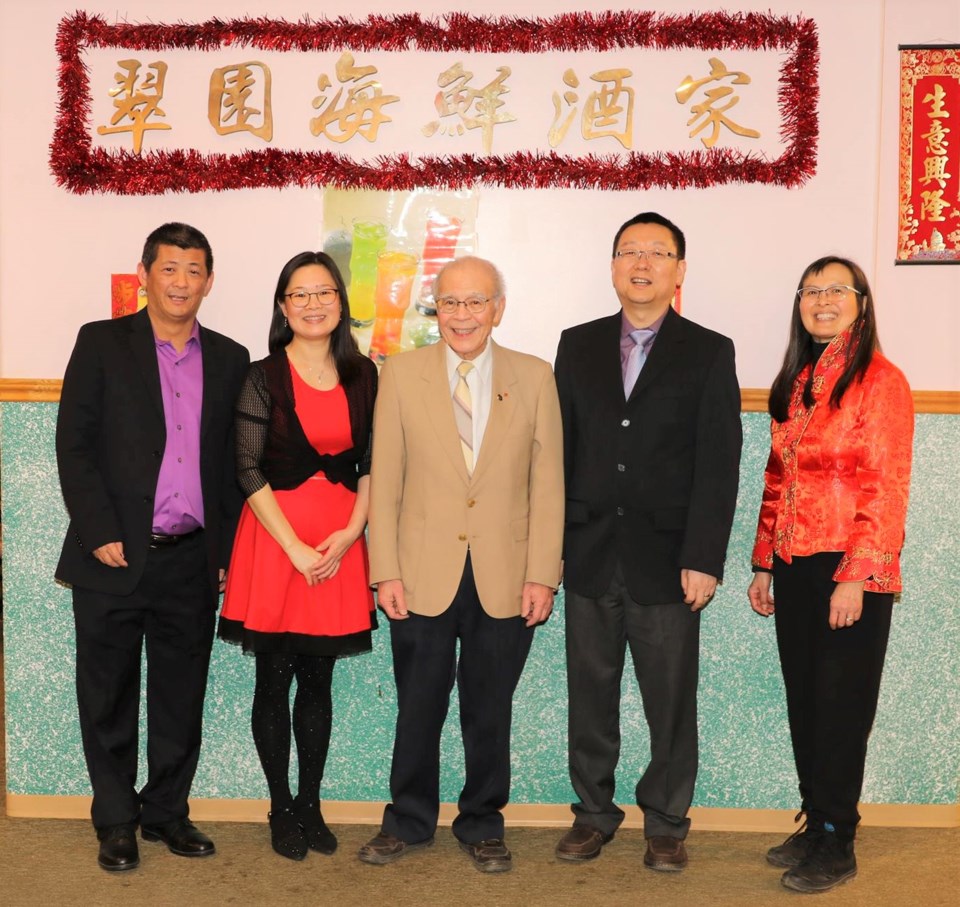Hundreds of Chinese people migrated to Moose Jaw in the early 1880s to lay tracks for the Canadian Pacific Railway, an influx that contributed to the growth of Chinese businesses, religious establishments, sports clubs and community associations.
CPR chose Moose Jaw as its divisional point in 1882, which quickly led to the municipality becoming a boom town with the largest Chinese population in the province, according to The Encyclopedia of Saskatchewan. By 1910, a small Chinatown with about 150 people had emerged on River Street, and by 1913, Moose Jaw had about 450 Chinese men and two women, 35 to 38 Chinese laundries, and three Chinese restaurants.
The majority of these Chinese immigrants originated from Taishan, in Guangdong province, which had been repeatedly ravaged with floods, earthquakes, plagues, typhoons, droughts, and civil wars during the late 1800s, according to the Canadian Museum of Immigration. The Chinese saw Canada as a refuge with opportunities for a better life.
One group that sprung up was the Chinese Benevolent Association, designed to connect the ethnic community. At some point in the 1900s, the group changed its name to the Moose Jaw Chinese Association (MJCA).
This non-profit group is the original association with which most people are familiar since it hosts the famous yearly Chinese New Year celebration with a nine-course banquet and Lion dance. Click here for celebrations from 2019 and here for 2020.
“I must emphasize the word original as it is the true and the original MJCA that I have known of since I came to Moose Jaw in 1965,” said acting president Kim Chow, who has been with the group since 1970.
“Two years ago, another group in Moose Jaw knowingly hijacked our association’s name (of) ‘Moose Jaw Chinese Association’ and named themselves as the ‘Moose Jaw Chinese Association Inc.’ Unfortunately, this causes some confusion for people in Moose Jaw, as well as for new Chinese people residing in Moose Jaw.”
Over the years, the original MJCA has organized or participated in activities that involve the Chinese and non-Chinese communities, he continued. This has included the New Year’s banquet, Christmas parades, fundraisers for people affected by natural disasters, Motif performances, Canada Day, and Sidewalk Days.
Chow has also used the MJCA name when participating with the multicultural society. This is why, he said, it is disappointing that a relatively new Chinese resident who was not a member would steal the group name, register it and then use it for her interests without consulting with the original association.
“I asked her to hand the name back to me, but she stopped and refused, and she quoted law and order,” he added. “She said it’s open game because we didn’t register it. She claims she wants to work for the interests of the Chinese community in Moose Jaw. To me, that is not working for the interests of Moose Jaw people. She should work in conjunction with us.”
The original association is important to Chinese people since it serves as a meeting point, is the only club that represents them, and speaks on their behalf, Chow explained. Most new Chinese immigrants register with the association to stay connected. The MJCA currently has 90 members.
The Moose Jaw Chinese Association does not have an official online presence since many of its original members are older, so any website or Facebook group that bears that name belongs to the woman who “shamelessly stole” the name, Chow continued. However, the club plans to create a website since the new Chinese immigrants are more tech-savvy.
No celebrations this year
Due to the pandemic, the MJCA can’t hold its annual Chinese New Year celebration this year to welcome in the Year of the Ox. Chow thought that was unfortunate since many new members had joined during the past year. Last year was the first time that more Chinese people than non-Chinese people attended the banquet.
Cultural importance
According to cultural sources, the lunar new year or spring festival is the most important holiday for Chinese people, where they rush back to their hometowns with gifts for family and relatives and spend seven days celebrating and reconnecting. On New Year’s Day, families sit down for a sumptuous nine-course meal, while children and young people receive money in a red envelope called Hong Bao.
Before that, however, people thoroughly clean their homes, decorate with red ornaments, cut their hair and buy new clothes to wash away back luck and welcome good luck for the year. However, all of this must be done before New Year’s Day, otherwise, they invite bad luck.
Respect and food offerings are given to a family’s ancestors at family altars and to various deities or gods on New Year’s Day, while firecrackers are also set off.
Even though there won’t be an in-person celebration this year, Chow wishes everyone Xīnnián kuàilè (Happy New Year), Zhù xǐ fācái (good fortune) and Shēntǐ jiànkāng (good health and long life).




